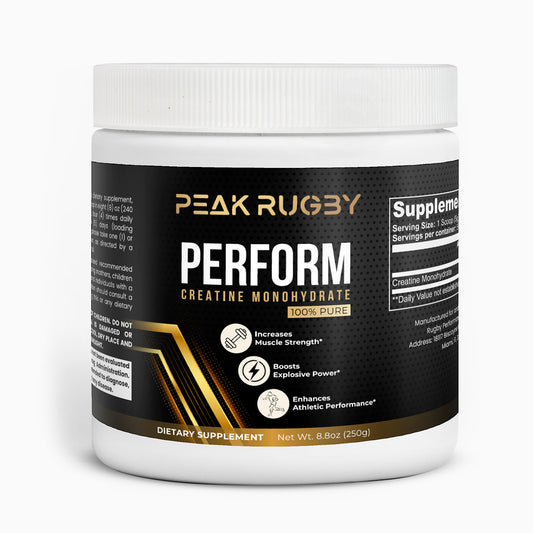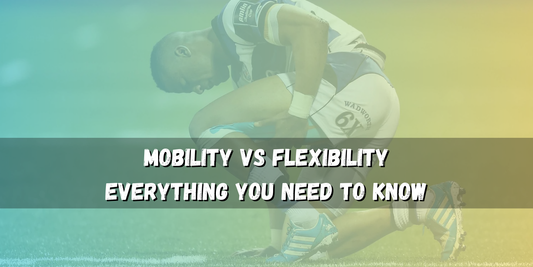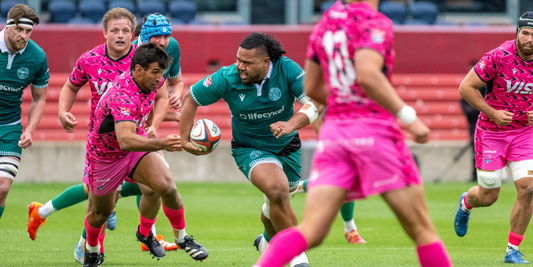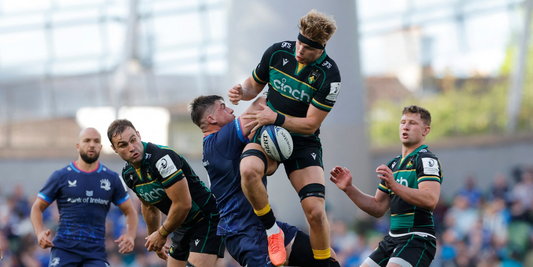Your neck is one of the most vulnerable areas in rugby. Whether you’re scrummaging, tackling, or absorbing impact, your cervical spine takes on more force than most athletes realize. Without proper mobility and strength, you’re more likely to suffer from whiplash, concussions, and postural imbalances that affect your performance and safety.
In Part 5 of our Mobility & Flexibility Series, we’re focusing on neck mobility—an often-overlooked key to injury prevention, contact confidence, and overall head and spine protection.
Check out the rest of the series:
- Part 1: Hip Mobility – Unlock Power & Stability
- Part 2: Ankle Mobility – Boost Speed & Agility
- Part 3: Thoracic Mobility - Enhance Movement & Control
-
Part 4: Shoulder Mobility – Maximize Range & Strength
- Part 6: Wrist Mobility – Grip, Dexterity & Contact Readiness
Let’s dive in.
WHAT IS NECK MOBILITY?
Neck mobility refers to the ability to move your head and neck freely through a full range of motion in all directions—flexion, extension, rotation, and lateral movement.
Many rugby players develop stiffness in the neck due to repeated impacts, poor posture, and lack of mobility work. This stiffness increases the risk of injury and limits your ability to position your head effectively in tackles and scrums.
Good neck mobility allows you to:
- Maintain proper head positioning in tackles and scrums.
- Reduce stress on your shoulders and upper back.
- Absorb contact efficiently, lowering the risk of neck strains and whiplash injuries.
- Improve reaction time and movement coordination.
THE NECK & UPPER SPINE – WHY IT MATTERS FOR RUGBY
Your neck is not just a single joint—it’s part of the cervical spine, which connects your head, shoulders, and upper back. Several key muscles and structures influence neck mobility:
Key Structures Affecting Neck Mobility:
1. Sternocleidomastoid (SCM) & Scalene Muscles
- Role: Control head rotation and lateral flexion.
- When Tight? Limits turning ability and can lead to neck stiffness.
2. Trapezius (Upper, Middle, Lower)
- Role: Assists with neck stability and upper back movement.
- When Tight? Causes tension headaches and restricts shoulder movement.
3. Levator Scapulae
- Role: Elevates the shoulder and assists in neck rotation.
- When Tight? Pulls the neck into a forward position, increasing injury risk.
4. Cervical Spine & Deep Neck Flexors
- Role: Maintain neck alignment and head control.
- When Weak? Reduces ability to absorb impact, increasing concussion risk.
WHY NECK MOBILITY MATTERS FOR RUGBY PERFORMANCE
1. Improved Tackle & Scrum Performance
A strong and mobile neck allows you to position your head correctly in tackles and scrums, reducing injury risk and improving contact efficiency.
2. Reduced Risk of Concussions & Whiplash
Greater neck mobility and strength help absorb impact more effectively, decreasing the likelihood of head trauma in collisions.
3. Better Posture & Breathing
A mobile neck prevents forward head posture, which can restrict breathing and reduce endurance on the field.
4. Decreased Shoulder & Upper Back Tension
Tight neck muscles often lead to stiff shoulders and restricted movement, affecting passing, tackling, and overall mobility.
THE CHAIN REACTION: HOW POOR NECK MOBILITY CAUSES INJURIES
If your neck is stiff or lacks mobility, your body compensates, leading to movement dysfunctions and injuries:
- Forward Head Posture → Increased Shoulder & Upper Back Tension → Neck Strains & Shoulder Pain
- Restricted Rotation → Poor Head Positioning in Tackles → Higher Concussion Risk
- Weak Deep Neck Flexors → Instability in Contact → Whiplash & Cervical Spine Strains
Modern lifestyle habits like looking down at phones, sitting too much, and bad posture further contribute to neck stiffness, making mobility work even more critical.
THE NECK MOBILITY ROUTINE EVERY RUGBY PLAYER NEEDS
You can improve neck mobility in just 10-15 minutes a day.
Step 1: Soft Tissue Release & Massage (3-5 Minutes)
- Goal: Loosen tight muscles and improve blood flow.
- Focus Areas: SCM, Scalenes, Upper Traps, and Levator Scapulae.
- Techniques: Self-massage, lacrosse ball release against a wall.
Step 2: Stretching & Mobility Drills (5-7 Minutes)
- Goal: Improve range of motion and flexibility.
- Exercises: Neck Rotations (CARs), Chin Tucks (Deep Neck Flexor Activation), Ear-to-Shoulder Stretch (Lateral Neck Stretch), Neck Extension Stretch (Counteracts Forward Head Posture)
Step 3: Strength & Stability (3-5 Minutes)
- Goal: Strengthen neck muscles to improve resilience in contact.
- Exercises: Isometric Neck Holds (Against Hand Resistance), Neck Bridges (For Controlled Strength Development), Band-Resisted Neck Extensions (For Impact Absorption Training)
WATCH THE FULL ROUTINE
We’ve put together the full neck mobility routine on our YouTube channel, guiding you through self-release, stretching, and strengthening exercises.
Check out the Neck Mobility Routine below:
FINAL THOUGHTS
Improving neck mobility will enhance performance, reduce injury risk, and improve reaction time.
- Stronger head positioning in tackles & scrums
- Lower concussion & whiplash risk
- Better posture & movement control
Start today. Your neck (and your game) will thank you.
Need More Help?
Check out our Rugby Workout Plans and Customized Training Programs to build a stronger, more resilient body.
This wraps up Part 5 of our Mobility & Flexibility Series: Neck Mobility. If you found this post helpful, make sure to:
- Like and share this post with fellow rugby players
- Bookmark the blog to stay updated on the next parts of the series
-
Follow Peak Rugby on X, Facebook and subscribe to the YouTube Channel for more rugby-specific training, mobility, and recovery tips.
Stay strong, keep pushing forward, and keep working on your mobility!


















